
IRIS login | Reed College home Volume 96, No. 2: June 2017
Tags
"Einstein"
Physics grads prove Einstein was right
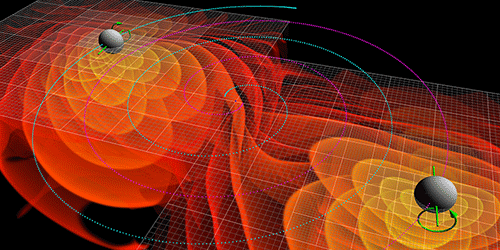
The collision of two black holes at near-light speed sent a gravitational wave pulsing through the fabric of space-time. Physical Review Letters
Long ago, in a galaxy far, far away, two black holes fell into each other's gravitational field and began to spin around each other at insanely high speed, ultimately smashing together in a spectacular collision that sent a pulse of energy rippling through the fabric of space-time.
This cosmic event was detected on September 14, 2015, by the Laser Interferometer Gravitational-Wave Observatory (LIGO)—a massive scientific achievement by thousands of scientists who worked on the project over multiple decades. Physics grads Larry Price ’01, Paul T. Baker ’06, Grant Meadors ’08, and Meg Millhouse ’12 were on the team behind the historic breakthrough, which marked the first time that gravitational waves have been detected and the first time that two black holes were seen to collide. (Until now, in fact, the evidence for the existence of black holes was somewhat theoretical.)
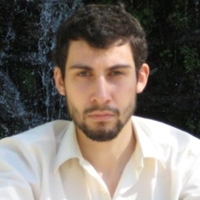
How did it feel to be part of this discovery? "Wonderful!" Grant told us. "How often can one help open a view to a new side of the universe?"
Grant began his work on gravitational wave astronomy at Reed, where Prof. David Griffiths and Prof. Johnny Powell agreed to him take Physics 200 his freshman year. "That fall I saw posters for the National Science Foundation's Research Experiences for Undergraduates," Grant says. "One was at LIGO Hanford. Dick Gustafson, a scientist there, knew of Reed and invited me to come work with him in the summer of 2005. That is how it all began!"
During his time at Reed, Grant ran the nuclear reactor, won a Goldwater Scholarship, and wrote his thesis, Re-searching galactic structure with Reed's radio telescope, with Prof. Bob Reynolds [physics].
After graduation, he studied physics at the University of Michigan and spent two years at the Hanford Observatory as a LIGO fellow, participating in the "quantum squeezer" experiment. After earning his PhD, he joined the Max Planck Institute for Gravitational Physics in Hannover, Germany, to resume his search for gravitational waves.
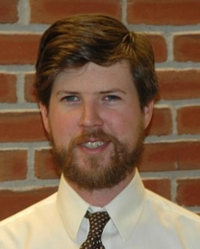
The authors of the groundbreaking paper included several other Reedies:
Paul T. Baker ’06 graduated in physics, writing his thesis on electrodynamics and weak-field Kerr geometry with Prof. Joel Franklin ’97. After Reed, he earned a PhD from Montana State University and is currently a visiting assistant professor at SUNY in Geneseo, NY, where he specializes in gravitational wave data analysis and bayesian statistics.
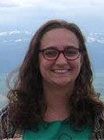
Meg Millhouse ’12 wrote her Reed thesis on neutrino oscillation tomography with Prof. David Latimer. (Her preface begins with a memorable quote from renowned physicist Wolfgang Pauli: “I have done something very bad today by proposing a particle that cannot be detected; it is something no theorist should ever do.") She later published her thesis in the American Journal of Physics. She is currently pursuing a PhD in physics at the Extreme Gravity Institute at Montana State University.
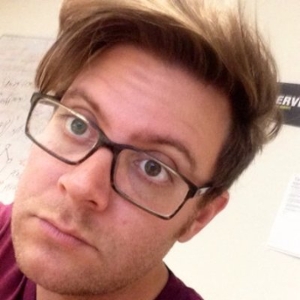
Larry Price ’01 wrote his thesis on Bargmann-Wigner formalism with Prof. Nick Wheeler ’55. After Reed, he earned a PhD from the University of Florida and spent six years working as a postdoc at the LIGO laboratory in Pasadena, where he developed software to optimize astronomical observations and authored well over a scholarly papers on the subject of gravitational waves. He is currently a data scientist at digital advertising firm OpenX.
Continue reading Physics grads prove Einstein was right

